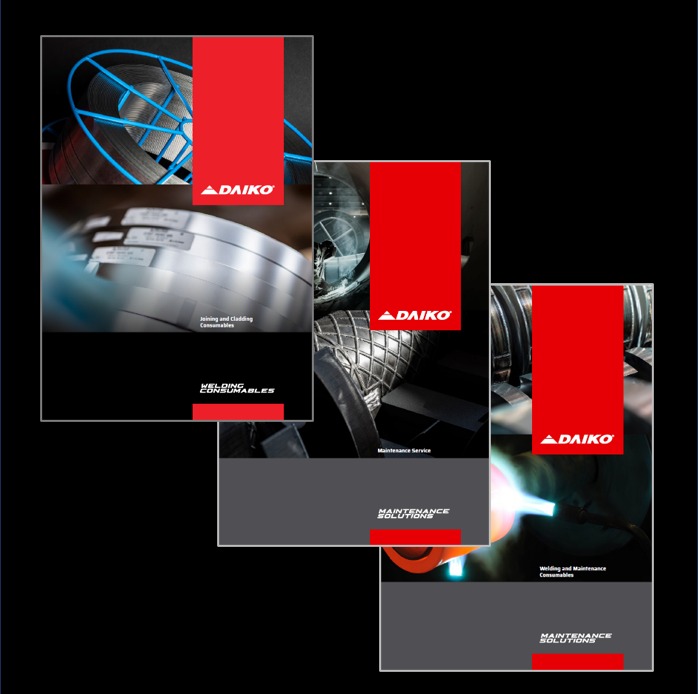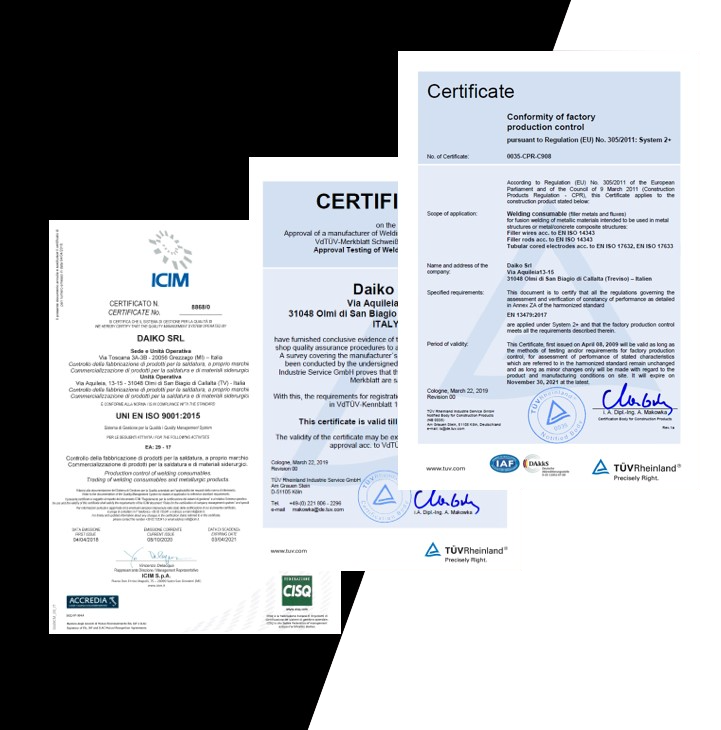410
Application
Designed for welding martensitic 12%Cr (type 410) stainless steel, these consumables require tempering in suitable post-weld heat treatment (PWHT) to address challenges arising from high hardness (~450HV) and low ductility in the as-welded condition. Type 410, with precisely calibrated carbon content, undergoes air-hardening, resulting in a predominantly martensitic microstructure. Structural properties are constrained below ambient due to its relatively high ductile-brittle transition temperature, especially in weldments, and up to about 550ºC by modest creep resistance. It exhibits practical resistance to general corrosion, sulphide-induced stress corrosion cracking (SCC) in sour crude oil service, and oxidation up to about 800°C. Applications include hydrocrackers, reaction vessels, distillation plants, pipework in refineries; furnace parts, linings; surfacing run-out rolls in steel mills; cast valve bodies, turbine parts, and burner nozzles.
Alloy Type
12%Cr (410) martensitic stainless steel.
Microstructure
In the PWHT condition the microstructure
consists of tempered martensite with some
retained ferrite.
Materials
EN W.Nr.: 1.4006 (X10Cr13), 1.4006 (G-X10Cr13), 1.4000 (X6Cr13), 1.4024 (X15Cr13).
ASTM: 410, 410S, 403, A487 gr. CA15.
UNS: S41008, S40300.
Welding & PWHT
Preheating within the range of 150-250°C becomes imperative for heavier sections. Subsequent to the welding process, it is essential to allow components to cool to room temperature before subjecting them to Post Weld Heat Treatment (PWHT). Both the weld metal and Heat-Affected Zones (HAZs) exhibit suboptimal ductility and toughness in the as-welded condition. Hence, careful handling is strongly advised before PWHT to minimize any potential physical shock. In the context of plain 410 welding, a typical industrial PWHT procedure involves a gradual cooling process to room temperature, allowing for complete transformation to occur (within the range of Ms-350°C to Mf-100°C). This is followed by tempering at temperatures between 680-760°C, succeeded by air cooling. For the specific requirement of achieving hardness below 22HRC (NACE) in the weld area, a preferred PWHT temperature is 745°C. Adhering to these prescribed steps ensures the desired mechanical properties and performance of the welded components.
Products of the line 410
| Product name | Process | AWS specifications | EN ISO specifications | |
| DAIKOWT 410 | GTAW |
AWS A5.9
ER410 |
EN ISO 14343-A
W 13 |
|
| G-TECH 410B | SMAW |
AWS A5.4
E410-15 |
EN ISO 3581-A
E 13 B 42 |
|
| G-TECH 410 | SMAW |
AWS A5.4
E410-16 |
EN ISO 3581-A
E 13 R 12 |
|
| G-TECH 410HR | SMAW |
AWS A5.4
E410-26 |
EN ISO 3581-A
E 13 R 52 |
|
| DAIKOWM 410 | GMAW |
AWS A5.9
ER410 |
EN ISO 14343-A
G 13 |
|
| DAIKOWS 410 | SAW |
AWS A5.9
ER410 |
EN ISO 14343-A
S 13 |


